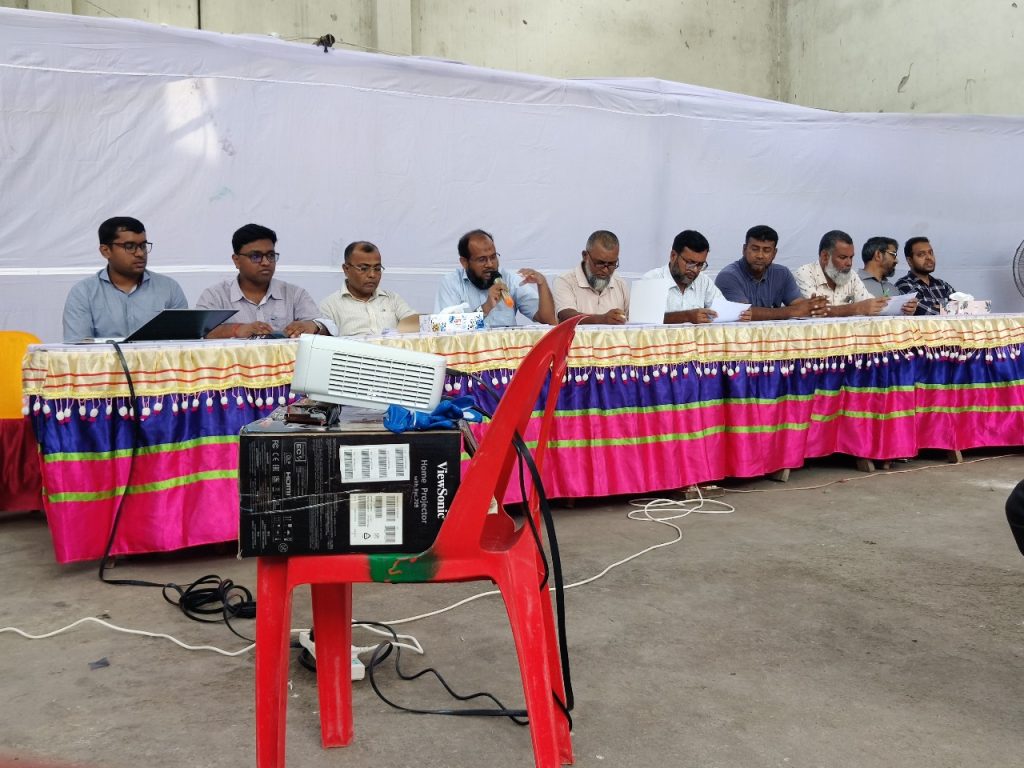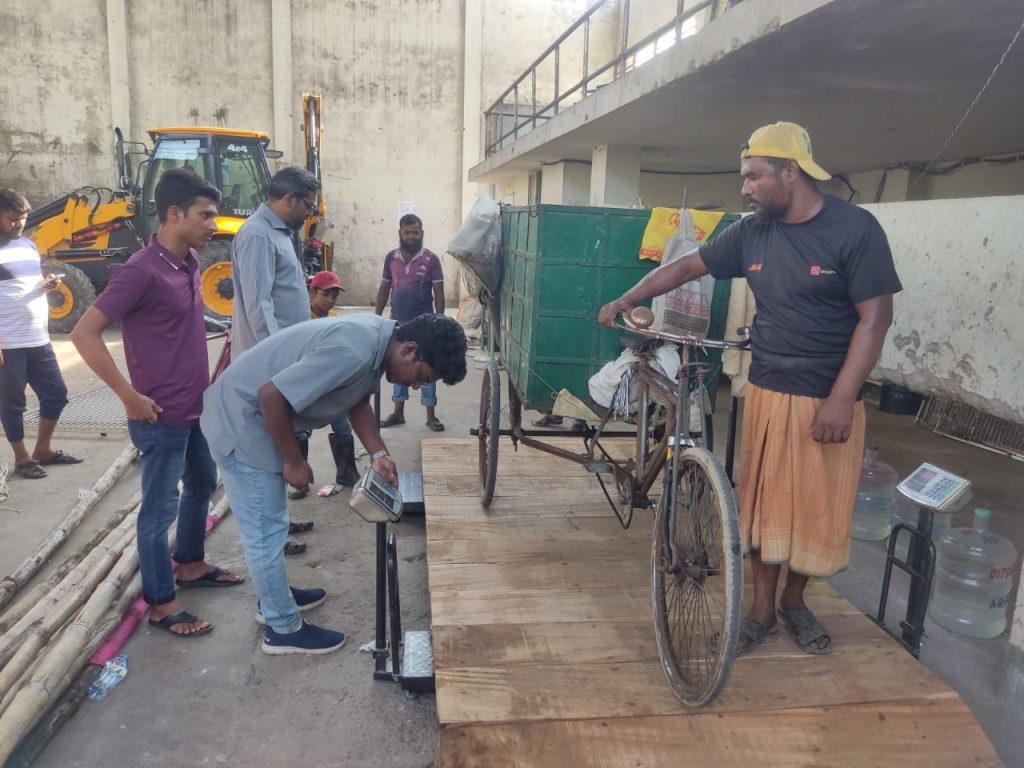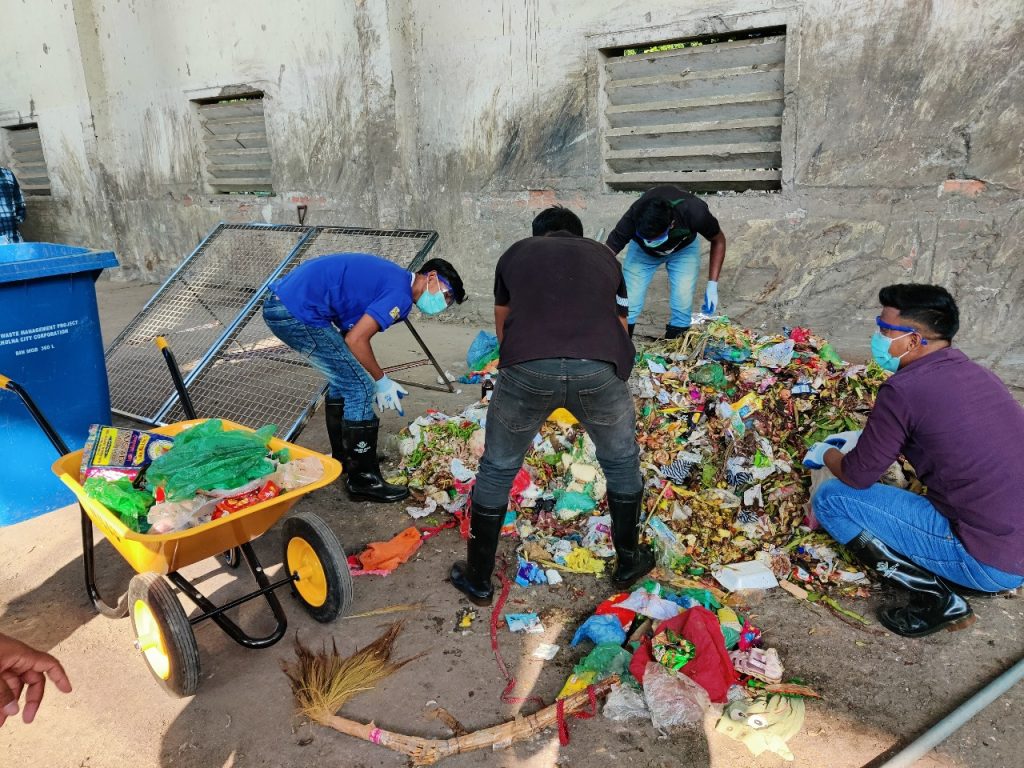New waste separation operation at Newsprint STS, Khalispur Khulna
Is waste separation at secondary transfer stations (STS) feasible? This is the question, we try to answer with our waste separation scheme at Newsprint STS in Khalispur, Khulna.
On 27.10.2024, the refurbished Newsprint STS was inaugurated. The new equipment comprises throwing sieves, wheelbarrows and sorting tools for low-cost, manual waste sorting. Four informal waste workers were employed for the operation. The workers received occupational health and safety training and instructions on the sorting process. In this test phase, we will sort biodegradable material, non-biodegradable and hazardous waste as specified in the 2021 Solid Waste Management Rules of Bangladesh. For now, the test phase will run for seven days and we will observe the technical sorting efficiency as well as operational aspects, like the occurrence of bad smells or pests. Then, we will compile results, evaluate the process and make improvements if necessary.





Waste separation is critical for material recovery. Every time waste is mixed, moved and transferred, materials start to deteriorate. Paper is a good example. It degrades very quickly if it gets wet and cannot be recovered after a while. In the case of plastic, contamination might lead to some degradation and can cause inefficiencies in the recycling process because additional cleaning or washing procedures must be implemented. Optimally, we would separate materials at the source. In the case of household waste, this would be at the household level. However, this is not always easy to implement since it requires a strong buy-in from residents and waste collectors. With our waste separation operation at the STS, we are investigating if material recovery with our manual sorting process is a feasible alternative to source separation at the household level.